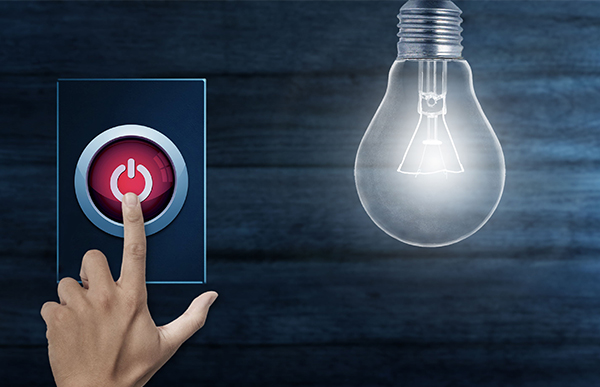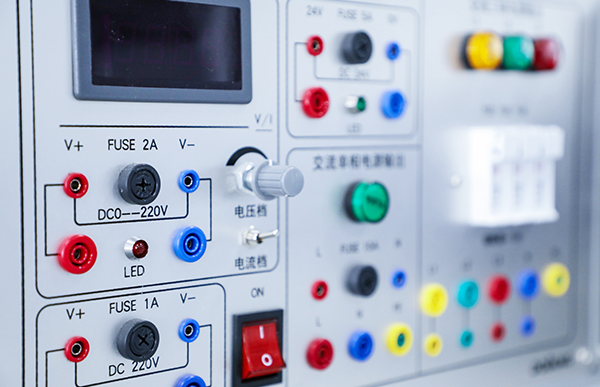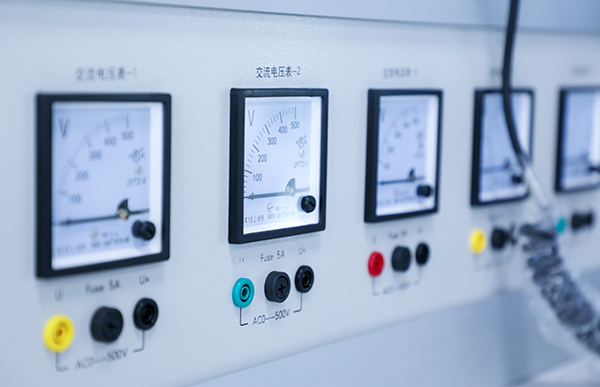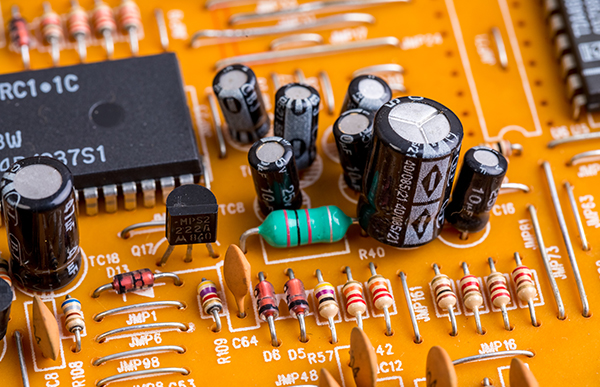【Dry goods】Classification and structure analysis of low-voltage circuit breakers
- Categories:Focus on industry
- Author:
- Origin:
- Time of issue:2020-11-17
- Views:0
(Summary description)Low-voltage circuit breakers are one of the most important protection and control components in low-voltage electrical appliances.
【Dry goods】Classification and structure analysis of low-voltage circuit breakers
(Summary description)Low-voltage circuit breakers are one of the most important protection and control components in low-voltage electrical appliances.
- Categories:Focus on industry
- Author:
- Origin:
- Time of issue:2020-11-17
- Views:0
1 Overview
Low-voltage circuit breakers are one of the most important protection and control components in low-voltage electrical appliances. They are mainly used in low-voltage distribution networks in industrial and mining enterprises, high-rise buildings, hotels, hospitals, airports, docks and modern residential communities to protect AC and DC power It protects it from over-current, reverse-current, short-circuit, over-under-voltage and other abnormal conditions. It can also be used in infrequently starting motors and operating conversion circuits. Intelligent low-voltage electrical appliances are more suitable for centralized control of automated substations and modern power grids.
2. Classification
(1) According to the type of current, it is divided into AC AC and DC DC.
(2) According to the arc extinguishing medium, air; vacuum; gas (very rarely used in low-voltage circuit breakers)
(3) Classified by use category
Type A: In the case of a short circuit, the circuit breaker does not clearly indicate the selective protection of another short circuit protection device connected in series on the load side, that is, in the case of a short circuit, there is no artificial short delay required for selective protection, so there is no Short-term withstand current requirements.
Type B: In the case of a short circuit, the circuit breaker is clearly specified as the selective protection of another short circuit protection device connected in series on the load side, that is, in the case of a short circuit, selective protection can be achieved, and a short time delay is artificial (adjustable) Therefore, there is a short-term withstand current requirement.
(4) According to the structure type
Universal type: referred to as ACB, all parts are installed on an insulated or metal frame, there are more structural changes, more types of releases, more auxiliary contacts, generally selective disconnection Circuit breakers, especially large-capacity circuit breakers, are often designed as universal.
Plastic shell type: referred to as plastic shell type or MCCB, all parts are installed in an insulating shell. Plastic case circuit breakers are compact in structure, small in size, light in weight, low in price, and safe to use (the operator is less likely to touch conductive parts), and is suitable for independent installation. Because of its small rated current, non-selective circuit breakers are mostly designed as plastic case type.
(5) Classified by protection device
Thermal type: mostly bimetallic, but also trimetallic
Electromagnetic: There is an iron core with a coil, which is mostly used for instantaneous release or backup protection
Electronic: Use electronic components to form a trip unit
Intelligent type: the trip unit is composed of a microprocessor, which can achieve various protection characteristics
Intelligent communication type: It has an intelligent trip unit, adds an interface and a field bus, supports various communication protocols, and achieves two-way communication.
(6) According to the principle of action
Current-limiting type: The short-circuit current repulsion effect is used to quickly open and break the contacts, and the short-circuit current can be broken before the maximum value of the first wave peak has appeared.
Non-current-limiting type: Generally for industrial use, it can break the expected short-circuit current. (7) According to breaking speed
General type: the action time is more than 20ms, generally for industrial use
Fast type: Action time is 10~20ms, mostly used for DC
(8) Classified by purpose
Residual current protection circuit breaker; no overcurrent protection circuit breaker CBI; instantaneous action circuit breaker ICB;
Distribution circuit breaker: used for power circuits, protection circuits and electrical equipment from short circuit and overload hazards
Special circuit breaker for motor protection: specially used to protect the starting motor
Special purpose circuit breakers: such as de-excitation circuit breakers
There seems to be little difference between the non-overcurrent protection circuit breaker CBI and the instantaneous action circuit breaker ICB. The former can be completely free of overcurrent (overload and short circuit) tripping devices, and is suitable for use as an isolator. The latter has an instantaneous tripping device. In addition to being an isolator, it emphasizes the coordination with motor protection devices and other overcurrent protection devices. The task of this type of circuit breaker is to do backup protection.
Structure analysis of low voltage circuit breaker
The circuit breaker structure is mainly composed of the following four parts.
1. Sensing element
Sensing elements are also called sensing elements (such as overcurrent releases, undervoltage releases, shunt releases, etc.), which can feel the abnormal conditions in the circuit and the commands of the operator, or other relay protection systems Signal, through the transmission element to make the actuator action. There are many types of sensing elements with different operating principles.
(1) Thermal bimetallic release
The thermal bimetallic trip is a tripping device with inverse time protection. It mainly senses the magnitude of the overload current, and uses the current to pass through the thermal bimetal to cause the bimetal to bend and act. The greater the current passing through the thermal bimetal, the faster and greater its bending deformation, and the shorter the action time of the release.
(2) Electromagnetic release
The electromagnetic release is composed of current coil, iron core, armature and reaction spring. When the overcurrent passes through the current coil, the electromagnetic force generated on the armature is sufficient to overcome the spring force of the reaction force spring and attract to the iron core, resulting in instantaneous action. Changing the size of the spring force can change the action current value, which is mostly used for the protection of large short-circuit currents. If a damping device (oil damper or clock delay mechanism) is used in conjunction, a delayed action can also be obtained.
The shunt release is also an electromagnetic release, which is composed of a voltage coil, an iron core, an armature and a reaction spring, and is powered by a control power supply. It can make the shunt release action according to the operator's command or the relay protection signal, so as to open the circuit breaker. One circuit breaker can be installed with one or two shunt releases to meet the needs of control. The undervoltage release is also an electromagnetic release, which can feel the change of the power supply voltage. When the power supply voltage is normal (rated voltage), the armature is in the pull-in state. When the power supply voltage drops to a certain value (usually 35% to 75% of the rated voltage), the armature pull-in force of the undervoltage release is insufficient. Under the action of the reaction spring, the armature is released and the circuit breaker is opened.
(3) Electronic release
The electronic trip unit is composed of a sensor, an electronic circuit and a tripping actuator. The electronic tripping device can easily obtain long time delay, short time delay, instantaneous protection characteristics and grounding protection, etc. It has obvious advantages and develops rapidly at the same time.
The sensor of the electronic trip unit is a current transformer, which is installed in the main circuit of the circuit breaker and reflects the change of the main current through an appropriate current ratio. There are two types of transformers. One is a fast saturation transformer with an iron core. Its secondary output can be used as a working power supply for electronic circuits. Its low current area has good linearity and can also be used to collect current signal changes. The second is the hollow transformer without iron core, which has good linearity and is mainly used for signal acquisition. In order to improve the reliability and accuracy of the trip unit, two kinds of transformers can be used to form a sampling circuit at the same time, and modern intelligent circuit breakers use this method.
The tripping actuator of the electronic trip unit can be composed of a shunt trip device, an undervoltage trip device or a magnetic flux converter.
The working principle of the shunt release is adopted: the final trigger signal of the electronic circuit is sent to the shunt release, so that the shunt release is closed and the circuit breaker is opened. Also using the under-voltage release is that the final trigger signal of the electronic circuit is sent to the under-voltage release, and the under-voltage release is short-circuited, so that the under-voltage release is activated and the circuit breaker is opened. The advantages of these two methods are simple structure and strong versatility; the disadvantage is that the electronic circuit has to provide larger power, and the action speed is slower, which is more used in old products. In the new type of smart circuit breaker, a magnetic flux converter is used as the tripping actuator, which consumes less power, has a fast action speed, is small in volume and weight, and works reliably.
The so-called flux converter is an electromagnetic system similar to the working principle of a polarized relay. When the circuit breaker is in the normal closing position, the iron core of the flux converter is attracted by the permanent magnet. When an overcurrent occurs, the signal processed by the sensor to the microprocessor causes current to flow through the coil, providing a reverse magnetic flux, which offsets the attraction of the permanent magnet, and the iron core is ejected under the action of the reaction spring to push the mechanism Trip to open the circuit breaker. Because the current that causes the reverse magnetic flux is extremely small, the power required for tripping is very small.
2. Tripping actuator
The tripping actuator includes the main contact and the arc extinguishing chamber, and the auxiliary contact is also an actuator. The contact performs the task of making and breaking the circuit, and the arc extinguishing chamber cooperates with the action of the contact to help extinguish the arc generated when the contact is broken. There are many types of contact systems, such as single-breakpoint contacts, double-breakpoint contacts (bridge contacts, rotating contacts), single-piece contacts, parallel contacts, and counter-contact and plug-in contacts. Specific analysis of specific circumstances. The arc extinguishing chamber has a grid type and a narrow slot type. AC circuit breakers mostly use grid type, and DC circuit breakers mostly use narrow slot type.
3. Delivery element
The components that bear the transmission and transformation of force, including transmission mechanism, free trip mechanism, main shaft, traction rod, etc. The transmission mechanism converts manpower or electricity into closing force to close the circuit breaker. The main shaft closes or breaks three-phase or three-phase plus N-phase contacts together. The free trip mechanism is a special feature of low-voltage circuit breakers, which turns the connection between the transmission mechanism and the contact system into a flexible connection. When the free tripping mechanism is buckled again, the transmission mechanism, especially the manual transmission mechanism, can directly drive the contact system to close; when the free tripping mechanism is tripped, the connection between the transmission mechanism and the contact system is released, and the transmission is then The mechanism cannot drive the contact system to close.
4. Other accessories
To form a complete circuit breaker, it can also have many accessories, such as auxiliary contacts, secondary wiring terminals, OK instructions, partitions, etc. for users to choose from.
Scan the QR code to read on your phone
RELATED LINKS
Technical Statement©Mutai Electrical Group Co., Ltd. 浙ICP备2020038742号-1 Powered by www.300.cn











 0577-62786655
0577-62786655

 在线留言
在线留言 
